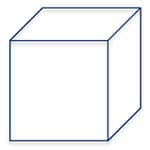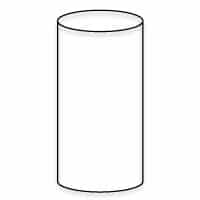Advanced Volume on the ISEE
Middle and Upper Level
ISEE Middle-Level Volume Question:
The surface area of a cube is 150 centimeters. What is its volume?
A) 5 cm3
B) 25 cm3
C) 100 cm3
D) 125 cm3

The solution:
Step 1: Work backwards from the surface area to determine the length of each side of your cube. Since the cube has 6 faces, we can divide the surface area by 6 to get the area of each face. Find its square root to get the side length:
150 ÷ 6 = 25; √25 = 5
Helpful tip: Since you don’t get a calculator, the ISEE usually provides numbers that are easy to work with, such as perfect squares. If you find yourself doing a complicated calculation, double check your work before continuing.
Step 2: Find the volume by taking the side length, 5, to the third power. The answer is D.
5 × 5 × 5 = 125
Helpful tip: Don’t stop before you’re finished! The test is tricky and often offers partial solutions, like A and B, as answer choices.
ISEE Upper-Level Volume Question:
The height of the cylinder shown is 5 times its diameter. The formula used to find the volume of a cylinder is V = πr2h or V = r2hπ where r is the radius of the cylinder and h is the height of the cylinder. If the diameter of the cylinder is 4 in., what is its volume, in inches3?
A) 80π
B) 100π
C) 160π
D) 320π

Helpful tip: If you see an unfamiliar figure on the test and you don’t know the formula, don’t panic! The ISEE often gives the formula for a less common figure within the problem. That said, it’s important to memorize common formulas, such as the volume of cubes and rectangular prisms.
Step 1: Use the information in the problem to figure out each variable in the formula:
r = half the diameter: 4 ÷ 2 = 2 in.
h = 5 times the diameter: 4 × 5 = 20 in.
Helpful tip: Don’t mix up diameter and radius! The test often gives you one of these measures when you need the other one to solve the problem.
Step 2: Plug each variable into the equation and solve: V = r2hπ = 22 x 20 x π = 80π. The correct answer is A.




